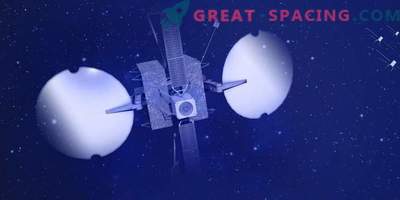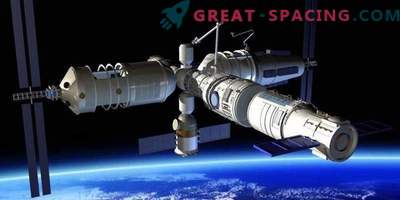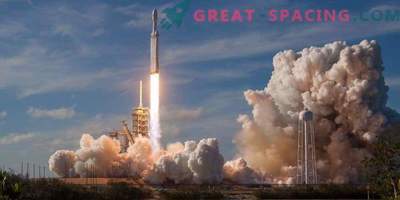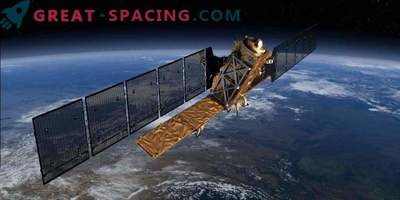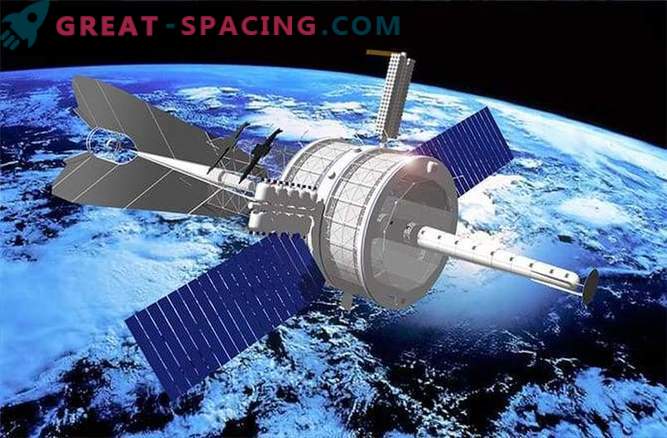
The launch of the probe robot to another star is a completely different scale in relation to the launch of the probe into the far reaches of the solar system.
Since the star closest to us is at a distance of more than 4 light years, we have to get used to the long-term communication delays — an interstellar unmanned aerial vehicle will need to have a multi-probe that is able to explore several media autonomously.
In the aggregate, the star probe is likely to have its own space exploration program, starting as a package of the transport system, which is intended for the Icarus project of hybrid missiles. However, hybrid missiles do not scale well and have a minimum size, usually hundreds of tons.
This is similar to how we sent a whole exploration program to another star system, and although this is not the main problem, it requires doing many things differently - it will be a paradigm shift in our approach and thinking about how to explore space. Not a single cosmodrome can provide resources for placing a vehicle in orbit or delivering hundreds or thousands of tons of fuel to a hybrid rocket.
The design of the hybrid rocket “Firefly” will be designed to fly to Alpha Centauri in 100 years, it will have a mass of about 1500-3000 tons and it will need to transfer deuterium fuel in an amount that is 19 times greater than its own mass. Thus, about 30.000-60.000 tons of equipment and fuel may be launched into orbit.
For security reasons, the hybrid rocket must be launched from a much higher orbit than the usual near-earth (LEO), where the International Space Station and other manned vehicles are located. Probably, these will be steady orbits between the Earth and the Moon, for example, the Lagrange point or the Halo orbit. However, to transport 60,000 tons between orbits will require a serious transport infrastructure. In the medium term (a decade or two), SpaceX's private rocket plans to launch 100 tons of payloads to Mars to support construction. The use of chemical rockets, such as the Falcon Heavy, will mean that the mass of the Mars Colonial Transporter will be at least 600 tons. Launching to the lunar orbit will require as much fuel as to the orbit of Mars. So for a space probe with a mass of 60,000 tons, 360,000 tons of payload will be needed (mainly fuel), this will be the case when using only chemical rockets. Such costs will be excessive.
However, consider this situation: we do not often think about how much our power sources weigh. At 1 gigawatt of coal power capacity, operating at 35 percent efficiency, it requires 0, 1 tons of coal per second. During the year, it burns 3,000,000 tons of coal and produces 10,000,000 tons of carbon dioxide and about 150,000 tons of ash.
Surprisingly, given the miniature modern spacecraft, look at the launch of thousands of tons of payload in high near-earth orbits. In the late 1970s, NASA, for example, conducted research on the construction of giant solar satellites in the geostationary orbit of the Earth, although the results of these surveys are only on paper. But it became clear that transport architectures can be well applied in the construction of an interstellar probe. Both Japan and China have expressed interest in launching solar-powered satellites, at least in a demonstration form since the 2030s and commercializing them in 2050.

Therefore, when the interstellar probe is built, it may be that by that time infrastructures will be available in outer space to support the construction process. The basis of the orbital transport infrastructure is planned as follows:
- First, delivery of payloads and fuel to orbit will be organized for those who are going to visit higher orbits. This will be the best option, truly reusable launch vehicles, such as the advanced versions of the SpaceX series from the Falcon company, which can exist for ten to twenty years, or the European Rocket Hybrid Skylon.
- Secondly, once in Earth orbit, the propellant needed to send the payload to the geostationary orbit will continue to be massively replaced with rocket non-chemical fuel, such as thermal nuclear energy, as well as solar thermal and solar electric energy. They require a much smaller volume of propellant to deliver the payload to higher orbits and, depending on the system chosen, this can take days or months.
It is worth thinking about the scale of transport systems required to support the construction of, for example, a solar satellite power station. A typical 1 gigawatt of ATP will weigh about 10,000 tons. The global need for energy is growing. Current demand is about 500 gigawatts per year, thus, to supply half of the required energy using a solar satellite power plant will require the construction of about 250 satellites per year - about 2.5 million tons of hardware to be in orbit.
Icarus’s fuel is expected to be deuterium extracted from the sea. However, as soon as SpaceX creates a bridgehead on Mars and transport infrastructure is established, scientists will actively begin a more optimal option. Several companies already intend to explore the potential resources of asteroids. A very lucrative market can also be created there in a couple of decades, but it will happen if SPS materials can be obtained from the resources located in the space with lower costs than with supplies from the cosmodrome from Earth. More convincing is the version that the main fuel for a stellar probe, deuterium, on Mars and on the Moon, exists in much higher percentages than on Earth. Deuterium atoms are twice as heavy as ordinary hydrogen because it is an isotope. Recent measurements of the presence of deuterium in the polar caps of Mars have shown that its content will be at least 8 times greater than the average value on Earth. Evidence was also found that the moon has a large amount of ice, derived from hydrogen, which got there with the solar wind and comets, and the moon should be even richer in deuterium than Mars.
Therefore, when the time comes for the construction of a star ship, it may be that there will already be fuel and materials that will be easily obtained from extraterrestrial sources.
To optimize the cost of transporting fuel for the ship, the new powerful system can be fully used to transport many other bulk cargoes. Finnish explorer Pekka Janhunen offers the E-Sail, a special conceptual design that creates a solar sail from charged electric wires.
The solar wind consists of a high-speed plasma stream emanating from the sun, which will flow around the electric field created by the wires, creating the necessary traction. This invention was announced with a brief description in 2004, it was tested on a series of satellites and the European Space Agency is planning to launch it. A fully functioning Electronic sail will be able to tow recovered deuterium from virtually any source in the solar system, such as Mars or asteroids, as well as any other cargo. These inventions can also be used as "gravitational towing vehicles" for asteroids that are dangerous for a collision with the Earth, or even move them into new, more useful orbits. Production activity in space will require the construction of a ship and many other applications, and this fact confirms the advantage of the Apollo program, which made it possible for people to land on the Moon. The microelectronics revolution in the 1970s and 80s owes much to "one giant leap of humanity." After all, then many new production processes were invented fairly quickly and many scientists in the physical, engineering and computer fields were trained.
Good luck favors those who know what unimaginable benefits will be derived from what will create a starship.

